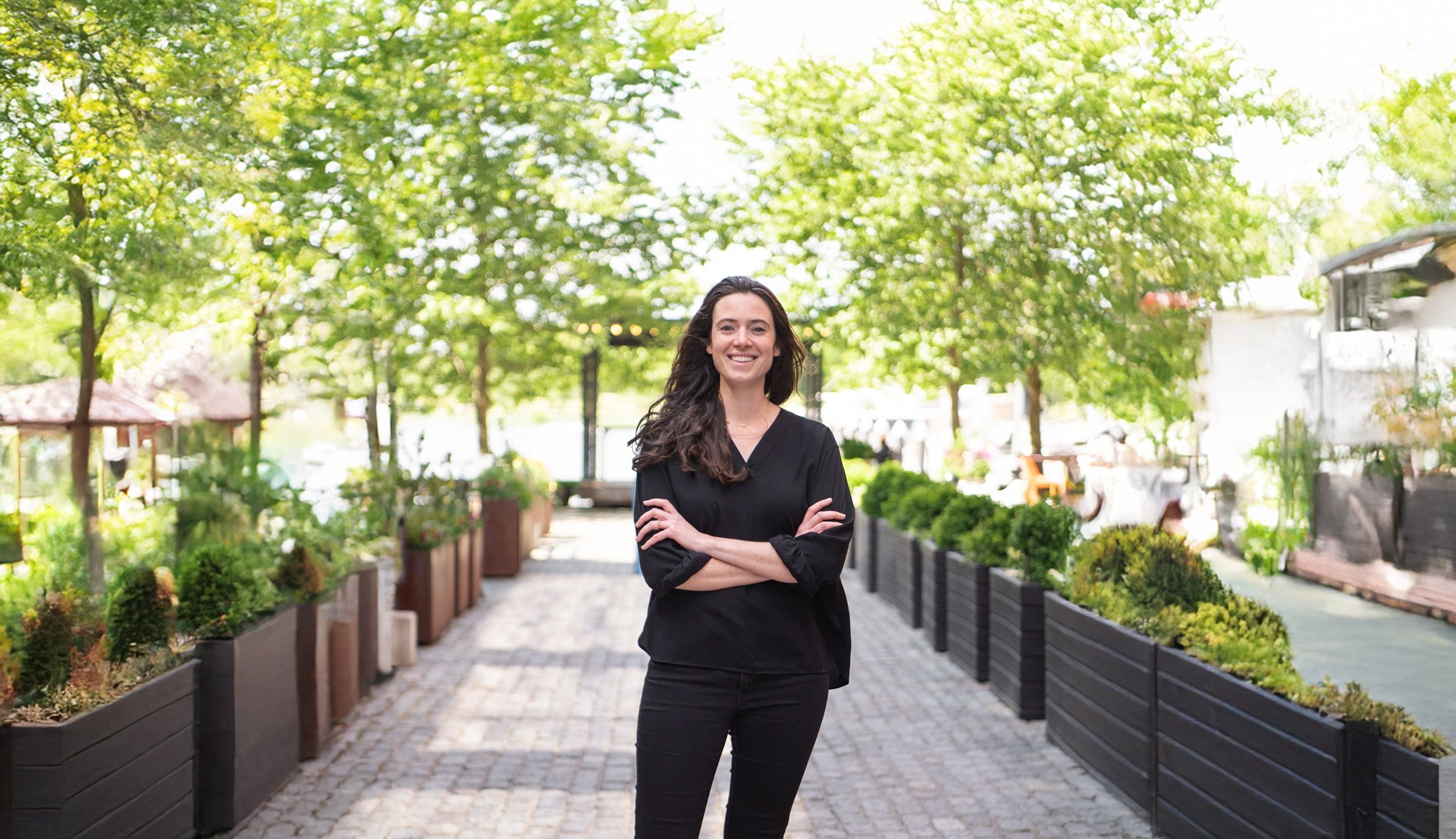
Five Minutes with Gaelle Gourmelon
We sat down with Associate Gaelle Gourmelon to learn more about her passion for landscape architecture.
How did you decide to go into a career in landscape architecture?
When deciding on a career, I’ve always gone back to two things: I really love science, and I want to do something good in the world. When I was in college, I thought that meant the obvious: going into medicine. But the more I went down the road of getting my biology degree, the less the idea of moving through sterile hospitals and dealing with antibiotics appealed to me. Instead, my time spent looking through a microscope in a sea turtle lab, differentiating mosquito species by the color of their wings, and memorizing bird calls made me realize that the “good in the world” I wanted to do was broader (and messier) than medicine.
That’s why I went instead toward public health. Public health looks less at the course of disease and more at the systems and environments that lead to health. I specialized in the field of environmental health, where practitioners focus on interactions between the external world and the body (human and otherwise). After a few years working as a fellow at the U.S. Environmental Protection Agency and working in the non-profit sector, I wanted to find a way to more directly shape the environment for the better. That’s when I discovered landscape architecture. I went back to school, gained the graphic and technical skills I needed to supplement my other training, and that’s where I am now.
How does your public health background influence your work as a designer?
I think one of the biggest ways that biology and public health have influenced the way I think is that I see the world through the lens of “affordances.” Affordances are relational. Both in biology and in public health, thinking of the environment not just in terms of its structure and program, but more in terms of the intention and capability of the user of the space makes design more open. Here’s an example. When designing, I could start by saying “I need a place for someone to sit.” That’s just describing the program I’m assigning to the space. I’d probably just drop a bench into my design and call it a day.
But if I start to think of my design as relational, where different users will look at the space through the lens of their own needs and bodies, things get more interesting. Could something less prescriptive suit more users? What affordances could I build in? Through that framework, I can start thinking about what different users might be seeking. A five-year-old might want to play. A grandparent might want to rest. A plant might benefit from extra shelter and heat. Instead of a standard bench, maybe something less prescriptive, like a wall or boulders instead. To little legs, they “afford” a challenging climb. To tired bodies, they “afford” a selection of seat-height stopping points. To a plant stuck in the ground, they “afford” radiative heat in the evening. That opens up a lot more possibilities than a bench.
What types of design projects do you most enjoy?
I am most interested in places where the affordances I create lead to play and wonder. This could be at a school or playground, but also along a sidewalk or tucked into an alley. I believe that all age groups benefit from play, that the feelings that play creates leads to attachment and stewardship. If you can wonder at seeing a new bird in your city or wonder at finding the “perfect rock” on your walk, you’ve taken the first step toward wanting to protect that place. If enough people care about their own spaces, then “doing something good in the world” really starts to take root.